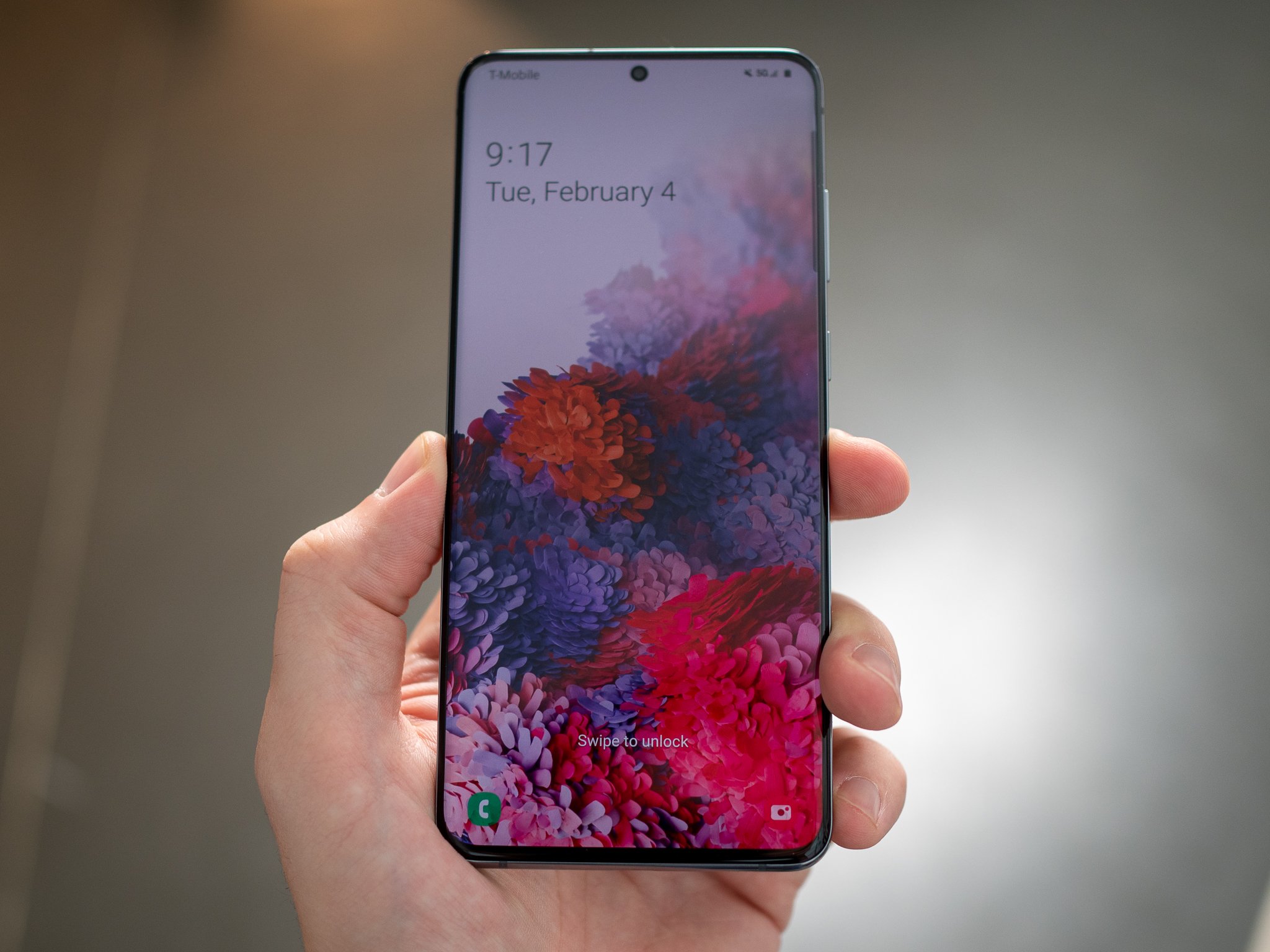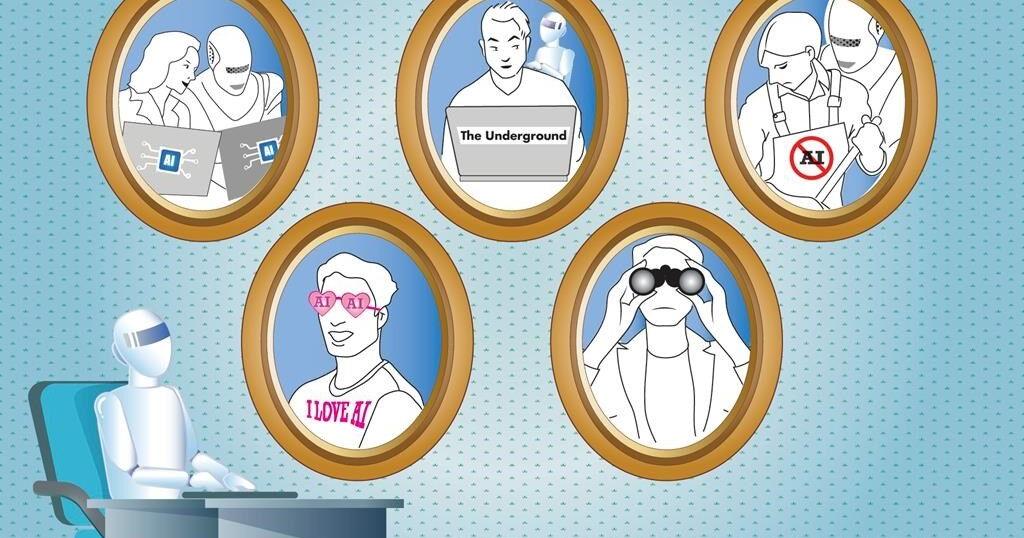 Source: Android Central
Source: Android Central
 Source: Android Central
Source: Android Central
Foldable phones are a new category of handheld. Some, like the Galaxy Fold, are big phones that fold into a small tablet, and some are more like the Moto Razr and Galaxy Z Flip that turn a smallish phone into a bigger phone. One thing they all have in common is a display that has to bend.
Samsung has made a pretty big deal about the Galaxy Z Flip having a glass display that can fold, but it’s not a glass display the way you would think it is.
 Source: Android Central
Source: Android Central
No two models of phone are built exactly the same way, but making a phone screen follows a fairly simple recipe using four layers.
First, you need some sort of backing so nothing that could come in contact with a circuit board inside the phone itself makes everything short out and go zap. On some phones, the backing is sturdy and helps make the phone more robust, and on others, it’s just a thin, flexible insulation layer.
Your phone’s screen is a four-layer sandwich.
On top of this backing, you have the actual display. This is the part that shows everything you see on the screen, like your home screen or an app, or a grid of icons. It’s connected to the phone’s circuitry, so what we expect to see is drawn on the display.
The display does not respond to touch, so the next layer is a digitizer. That’s a fancy word for touchscreen, and it’s the part that registers precisely where you touch and for how long. It, too, is connected to the phone’s circuitry, and the phone keeps track of where things are drawn on the display layer and where you touch on the digitizer layer to make things work the way we expect them to work.
The top layer of most phone screens is a nice clear piece of glass.
On top of everything is a piece of glass. Not just any glass will work, as you need something that’s thin and designed not to scratch easily, and also electrically conductive enough so that the digitizer can register where you are touching.
While this recipe sounds simple on paper, getting everything right is an incredibly complex task that takes a lot of work and the right parts. And when you expect the display to fold in half, everything gets more complex, and many of the parts need to be designed in-house.
 Source: Android Central
Source: Android Central
Flexible OLED panels that can twist and fold and bend aren’t very new. LG first showed off a flexible OLED panel in 2012 that would wrap around a roller or be bent in half without any visible damage. Most likely, Samsung and Sony and every other company that makes displays also had a similar design sitting in an R&D lab.
This is because the OLED panel itself isn’t a rigid thing. It’s more like a film or an old-school vinyl screen protector that flexes and bends and can be shaped however it needs to be, with the actual crystal cells being the only part that’s sensitive to being folded. All display makers needed to do was make these cells (think of them as the individual pixels) tougher without making the panel itself more rigid.
Samsung Galaxy Z Flip vs. Motorola RAZR: Which foldable should you buy?
The digitizer is likewise a film sheet and folding it isn’t much of a problem either. I’m sure similar work needed to be done so it could be flexible during normal use and still register properly, but no wheels needed to be reinvented here.
The top layer — what would be some sort of hardened glass like Corning’s Gorilla Glass on a regular phone — is a whole different story. There is no way a 500-micron thick piece of ultra-clear hardened and coated glass is going to flex more than a few degrees before it snaps unless it’s really big. Like the side of your house big.
Samsung had to come up with a solution, and with the original Galaxy Fold, that solution was a plastic display. Since the words plastic display have such a negative stigma when it comes to touchscreen devices like a phone, with the Galaxy Z Flip, Samsung went further and used a glass display. Technically, anyway.
[embedded content]
Samsung tapped a company called SCHOTT to make a super flexible glass layer for the top of the Galaxy Z Flip screen. It’s actual glass, it actually bends, and can actually break just like regular glass does if you abuse it or get unlucky.
Received my Samsung Galaxy Z Flip just now. Opened the box. Removed the protective/instruction film. Flipped the phone as you would do since it’s a flip phone and this happened. I heard the crack as well. ? cold weather?#SamsungGalaxy #ZFlip #samsung pic.twitter.com/j8KLL2vm8d
— Amir ? (@mondoir) February 14, 2020
Sounds great, right? It is, except for one thing — this glass layer is really thin, and without some sort of protection, it’s going to break very easily. So Samsung did the only thing it could with the technology we have today — add a plastic protective layer over the top of the glass.
So you now have a fifth layer in the display sandwich — plastic protective layer > UTG (ultra-thin glass) layer > digitizer > SAMOLED display > backing. This is why it scratches so easily when Zack from JerryRigEverything gets his hardness stylii out and checks how good the “glass” display on the Z Flip really is.
[embedded content]
But that’s not the only issue with the Z Flip display. Everything is super thin and super flexible and covered with plastic. This is why Samsung tells you not to press had on the display when you use it. Sharp fingernails will cut into the plastic layer, and if you press too hard, you might just break the ultra-thin-glass layer because there isn’t a lot there to support it. Science and all that.
 Source: Andrew Martonik / Android Central
Source: Andrew Martonik / Android Central
I really think Samsung needs to stop advertising the Galaxy Z Flip as having a glass display without a great big asterisk beside it. But I also think Samsung did the best job it could do with the tech available right now.
You probably aren’t going to push hard enough on the display of any phone to break the Z Flip’s glass layer, and if you get out hardness testers and scratch things you deserve what you get.
Having something like a fingernail scratch the plastic overcoat is very concerning though, and I hope Samsung has some sort of plan for a screen protection accessory (maybe a two-piece glass protector?) that prevents this from happening. The rest of the phone looks solid, and I can see mass consumer appeal if the price can come down. I can also see mass consumer backlash if screens start scratching and breaking much easier than every other phone out there.
In the end, it is the first foldable with a glass screen, even if it’s buried under a layer of plastic and prone to breakage.
A foldable with a glass display. Sort of.
The Galaxy Z Flip certainly isn’t for everyone, but it’s the first folding phone that has the potential to appeal to more than diehard techies. The display feels nicer to touch even if it’s still plastic we’re touching, and it’s also slightly cheaper than the Galaxy S20 Ultra.

SAN FRANCISCO (AP) — Artificial intelligence‘s recent rise to the forefront of business has left most office workers wondering how often they should use the technology and whether a computer will eventually replace them.
Those were among the highlights of a recent study conducted by the workplace communications platform Slack. After conducting in-depth interviews with 5,000 desktop workers, Slack concluded there are five types of AI personalities in the workplace: “The Maximalist” who regularly uses AI on their jobs; “The Underground” who covertly uses AI; “The Rebel,” who abhors AI; “The Superfan” who is excited about AI but still hasn’t used it; and “The Observer” who is taking a wait-and-see approach.
Only 50% of the respondents fell under the Maximalist or Underground categories, posing a challenge for businesses that want their workers to embrace AI technology. The Associated Press recently discussed the excitement and tension surrounding AI at work with Christina Janzer, Slack’s senior vice president of research and analytics.
Q: What do you make about the wide range of perceptions about AI at work?
A: It shows people are experiencing AI in very different ways, so they have very different emotions about it. Understanding those emotions will help understand what is going to drive usage of AI. If people are feeling guilty or nervous about it, they are not going to use it. So we have to understand where people are, then point them toward learning to value this new technology.
Q: The Maximalist and The Underground both seem to be early adopters of AI at work, but what is different about their attitudes?
A: Maximalists are all in on AI. They are getting value out of it, they are excited about it, and they are actively sharing that they are using it, which is a really big driver for usage among others.
The Underground is the one that is really interesting to me because they are using it, but they are hiding it. There are different reasons for that. They are worried they are going to be seen as incompetent. They are worried that AI is going to be seen as cheating. And so with them, we have an opportunity to provide clear guidelines to help them know that AI usage is celebrated and encouraged. But right now they don’t have guidelines from their companies and they don’t feel particularly encouraged to use it.
Overall, there is more excitement about AI than not, so I think that’s great We just need to figure out how to harness that.
Q: What about the 19% of workers who fell under the Rebel description in Slack’s study?
A: Rebels tend to be women, which is really interesting. Three out of five rebels are women, which I obviously don’t like to see. Also, rebels tend to be older. At a high level, men are adopting the technology at higher rates than women.
Q: Why do you think more women than men are resisting AI?
A: Women are more likely to see AI as a threat, more likely to worry that AI is going to take over their jobs. To me, that points to women not feeling as trusted in the workplace as men do. If you feel trusted by your manager, you are more likely to experiment with AI. Women are reluctant to adopt a technology that might be seen as a replacement for them whereas men may have more confidence that isn’t going to happen because they feel more trusted.
Q: What are some of the things employers should be doing if they want their workers to embrace AI on the job?
A: We are seeing three out of five desk workers don’t even have clear guidelines with AI, because their companies just aren’t telling them anything, so that’s a huge opportunity.
Another opportunity to encourage AI usage in the open. If we can create a culture where it’s celebrated, where people can see the way people are using it, then they can know that it’s accepted and celebrated. Then they can be inspired.
The third thing is we have to create a culture of experimentation where people feel comfortable trying it out, testing it, getting comfortable with it because a lot of people just don’t know where to start. The reality is you can start small, you don’t have to completely change your job. Having AI write an email or summarize content is a great place to start so you can start to understand what this technology can do.
Q: Do you think the fears about people losing their jobs because of AI are warranted?
A: People with AI are going to replace people without AI.
The Canadian Press. All rights reserved.

WASHINGTON (AP) — The Biden administration said Tuesday that it would provide up to $325 million to Hemlock Semiconductor for a new factory, a move that could help give Democrats a political edge in the swing state of Michigan ahead of election day.
The funding would support 180 manufacturing jobs in Saginaw County, where Republicans and Democrats were neck-in-neck for the past two presidential elections. There would also be construction jobs tied to the factory that would produce hyper-pure polysilicon, a building block for electronics and solar panels, among other technologies.
Commerce Secretary Gina Raimondo said on a call with reporters that the funding came from the CHIPS and Science Act, which President Joe Biden signed into law in 2022. It’s part of a broader industrial strategy that the campaign of Vice President Kamala Harris, the Democratic nominee, supports, while Republican nominee Donald Trump, the former president, sees tariff hikes and income tax cuts as better to support manufacturing.
“What we’ve been able to do with the CHIPS Act is not just build a few new factories, but fundamentally revitalize the semiconductor ecosystem in our country with American workers,” Raimondo said. “All of this is because of the vision of the Biden-Harris administration.”
A senior administration official said the timing of the announcement reflected the negotiating process for reaching terms on the grant, rather than any political considerations. The official insisted on anonymity to discuss the process.
After site work, Hemlock Semiconductor plans to begin construction in 2026 and then start production in 2028, the official said.
Running in 2016, Trump narrowly won Saginaw County and Michigan as a whole. But in 2020 against Biden, both Saginaw County and Michigan flipped to the Democrats.
The Canadian Press. All rights reserved.

Although no one likes a know-it-all, they dominate the Internet.
The Internet began as a vast repository of information. It quickly became a breeding ground for self-proclaimed experts seeking what most people desire: recognition and money.
Today, anyone with an Internet connection and some typing skills can position themselves, regardless of their education or experience, as a subject matter expert (SME). From relationship advice, career coaching, and health and nutrition tips to citizen journalists practicing pseudo-journalism, the Internet is awash with individuals—Internet talking heads—sharing their “insights,” which are, in large part, essentially educated guesses without the education or experience.
The Internet has become a 24/7/365 sitcom where armchair experts think they’re the star.
Not long ago, years, sometimes decades, of dedicated work and acquiring education in one’s field was once required to be recognized as an expert. The knowledge and opinions of doctors, scientists, historians, et al. were respected due to their education and experience. Today, a social media account and a knack for hyperbole are all it takes to present oneself as an “expert” to achieve Internet fame that can be monetized.
On the Internet, nearly every piece of content is self-serving in some way.
The line between actual expertise and self-professed knowledge has become blurry as an out-of-focus selfie. Inadvertently, social media platforms have created an informal degree program where likes and shares are equivalent to degrees. After reading selective articles, they’ve found via and watching some TikTok videos, a person can post a video claiming they’re an herbal medicine expert. Their new “knowledge,” which their followers will absorb, claims that Panda dung tea—one of the most expensive teas in the world and isn’t what its name implies—cures everything from hypertension to existential crisis. Meanwhile, registered dietitians are shaking their heads, wondering how to compete against all the misinformation their clients are exposed to.
More disturbing are individuals obsessed with evangelizing their beliefs or conspiracy theories. These people write in-depth blog posts, such as Elvis Is Alive and the Moon Landings Were Staged, with links to obscure YouTube videos, websites, social media accounts, and blogs. Regardless of your beliefs, someone or a group on the Internet shares them, thus confirming your beliefs.
Misinformation is the Internet’s currency used to get likes, shares, and engagement; thus, it often spreads like a cosmic joke. Consider the prevalence of clickbait headlines:
Titles that make outrageous claims are how the content creator gets reads and views, which generates revenue via affiliate marketing, product placement, and pay-per-click (PPC) ads. Clickbait headlines are how you end up watching a TikTok video by a purported nutrition expert adamantly asserting you can lose belly fat while you sleep by drinking, for 14 consecutive days, a concoction of raw eggs, cinnamon, and apple cider vinegar 15 minutes before going to bed.
Our constant search for answers that’ll explain our convoluted world and our desire for shortcuts to success is how Internet talking heads achieve influencer status. Because we tend to seek low-hanging fruits, we listen to those with little experience or knowledge of the topics they discuss yet are astute enough to know what most people want to hear.
There’s a trend, more disturbing than spreading misinformation, that needs to be called out: individuals who’ve never achieved significant wealth or traded stocks giving how-to-make-easy-money advice, the appeal of which is undeniable. Several people I know have lost substantial money by following the “advice” of Internet talking heads.
Anyone on social media claiming to have a foolproof money-making strategy is lying. They wouldn’t be peddling their money-making strategy if they could make easy money.
Successful people tend to be secretive.
Social media companies design their respective algorithms to serve their advertisers—their source of revenue—interest; hence, content from Internet talking heads appears most prominent in your feeds. When a video of a self-professed expert goes viral, likely because it pressed an emotional button, the more people see it, the more engagement it receives, such as likes, shares and comments, creating a cycle akin to a tornado.
Imagine scrolling through your TikTok feed and stumbling upon a “scientist” who claims they can predict the weather using only aluminum foil, copper wire, sea salt and baking soda. You chuckle, but you notice his video got over 7,000 likes, has been shared over 600 times and received over 400 comments. You think to yourself, “Maybe this guy is onto something.” What started as a quest to achieve Internet fame evolved into an Internet-wide belief that weather forecasting can be as easy as DIY crafts.
Since anyone can call themselves “an expert,” you must cultivate critical thinking skills to distinguish genuine expertise from self-professed experts’ self-promoting nonsense. While the absurdity of the Internet can be entertaining, misinformation has serious consequences. The next time you read a headline that sounds too good to be true, it’s probably an Internet talking head making an educated guess; without the education seeking Internet fame, they can monetize.
______________________________________________________________
Nick Kossovan, a self-described connoisseur of human psychology, writes about what’s
on his mind from Toronto. You can follow Nick on Twitter and Instagram @NKossovan.


Calmer weather helps contain Oakland, California, fire that forced evacuations


Forward Jade Kovacevic is the first player signing announced by Northern Super League


Israel says it will target Hezbollah’s financial arm and begins striking Beirut


Harris raises $633 million in the third quarter but spends heavily in final push


What Difference Will You Make to an Employer?


Supply shortage for Ontario home care, palliative patients unacceptable: minister


White House says health insurance needs to fully cover condoms, other over-the-counter birth control


CAFA gala names Beaufille, Spencer Badu this year’s top fashion designers